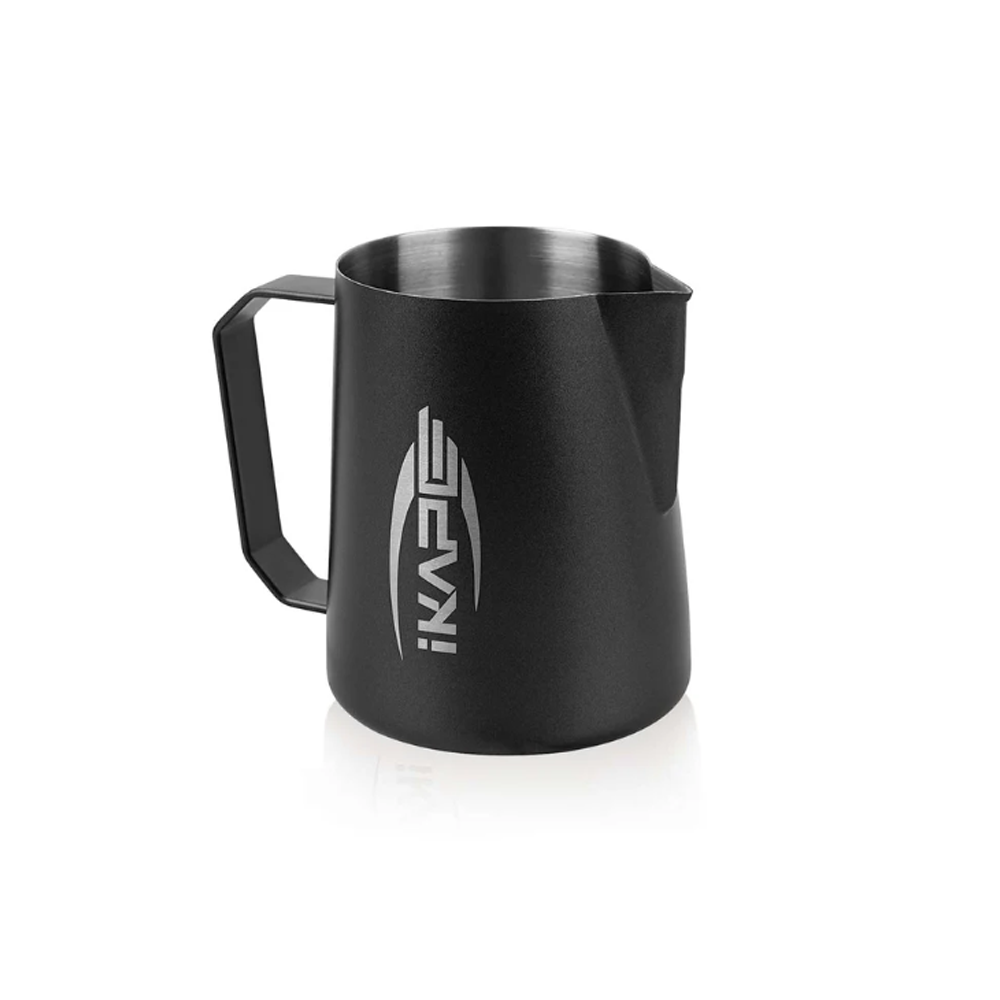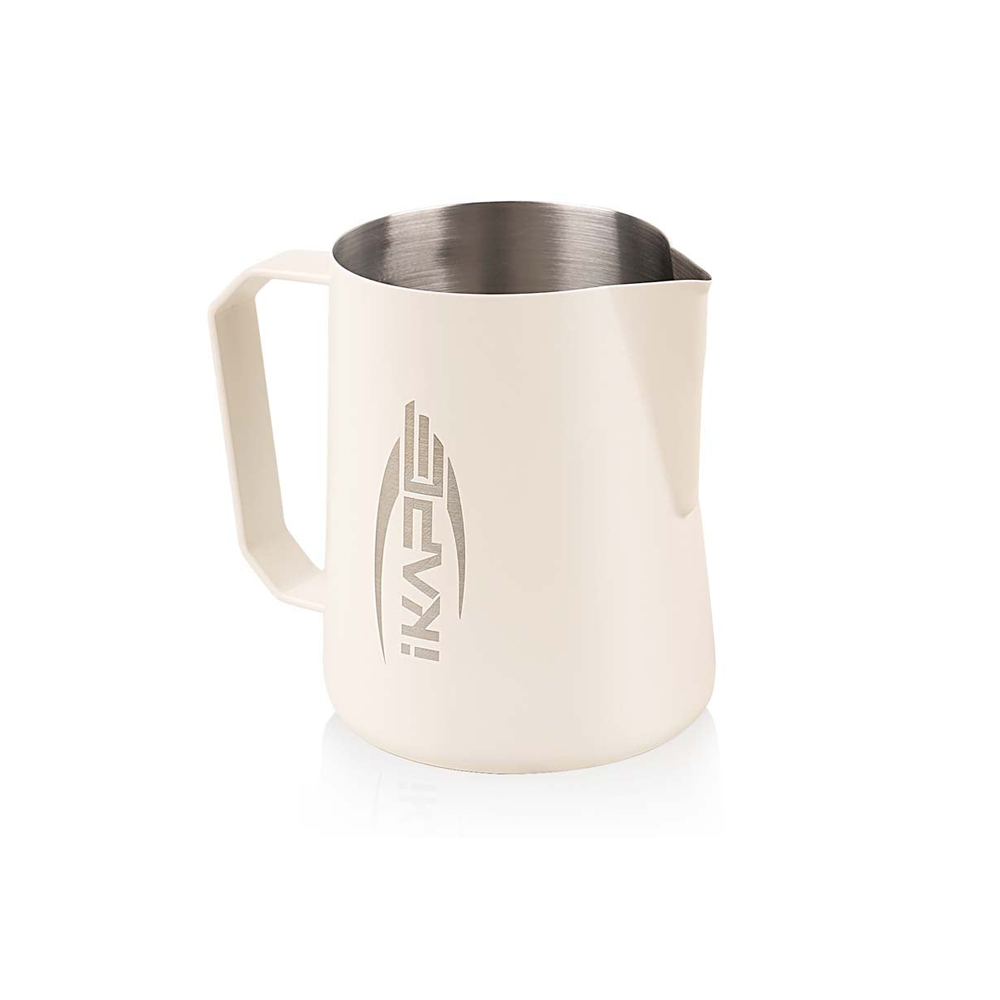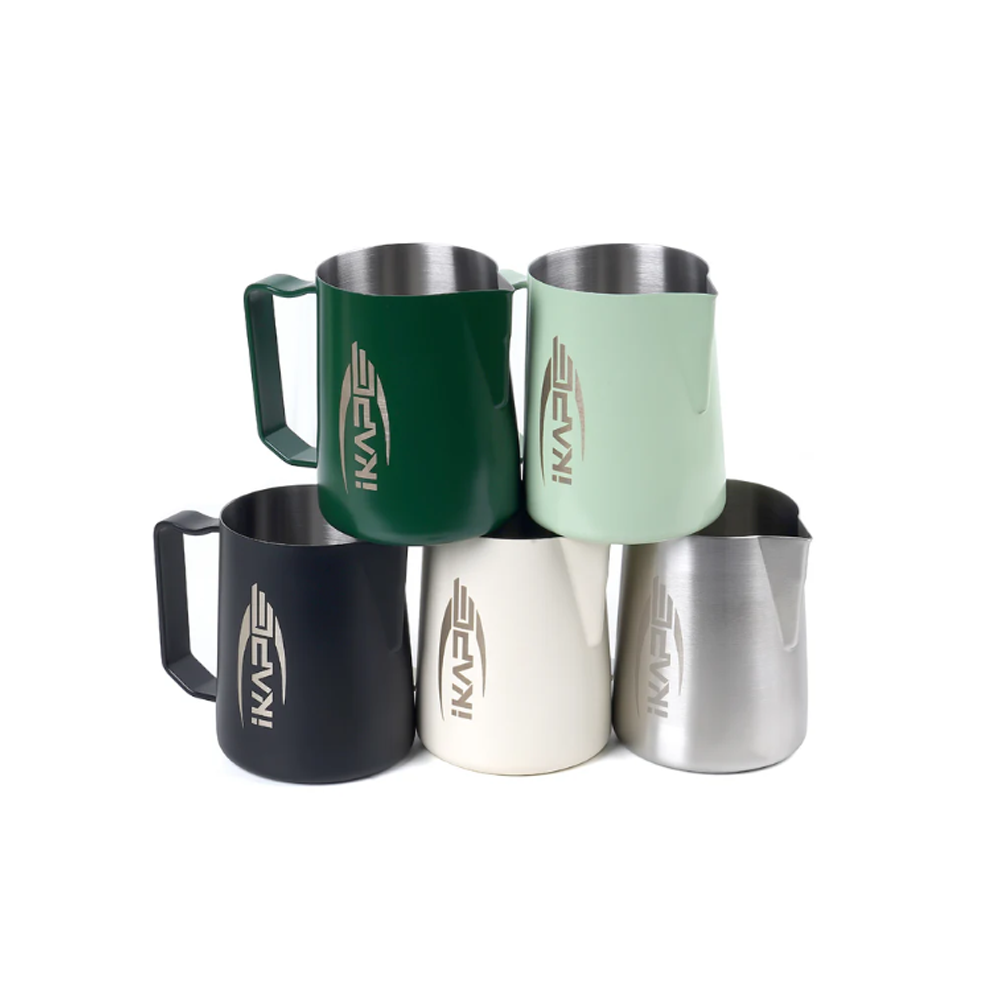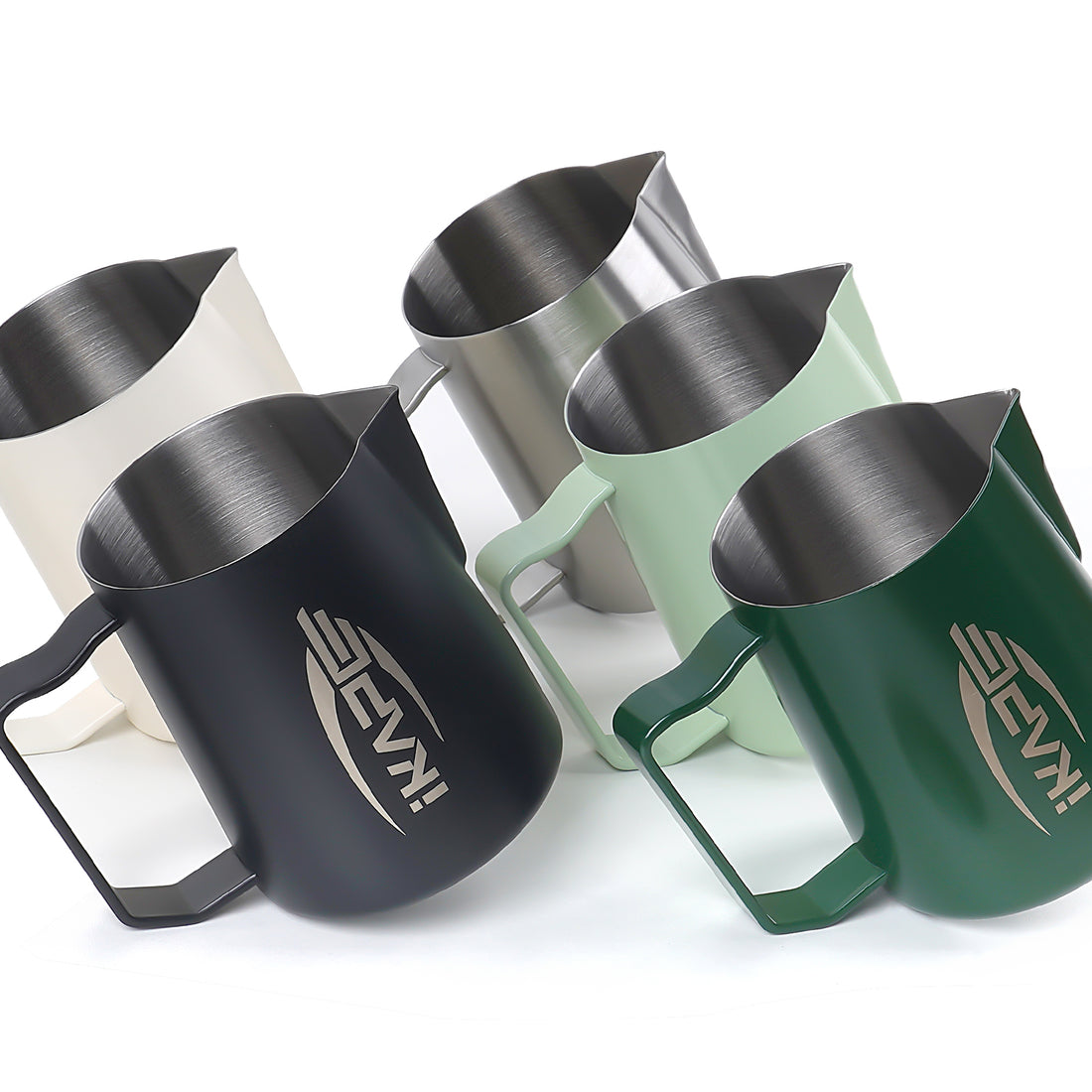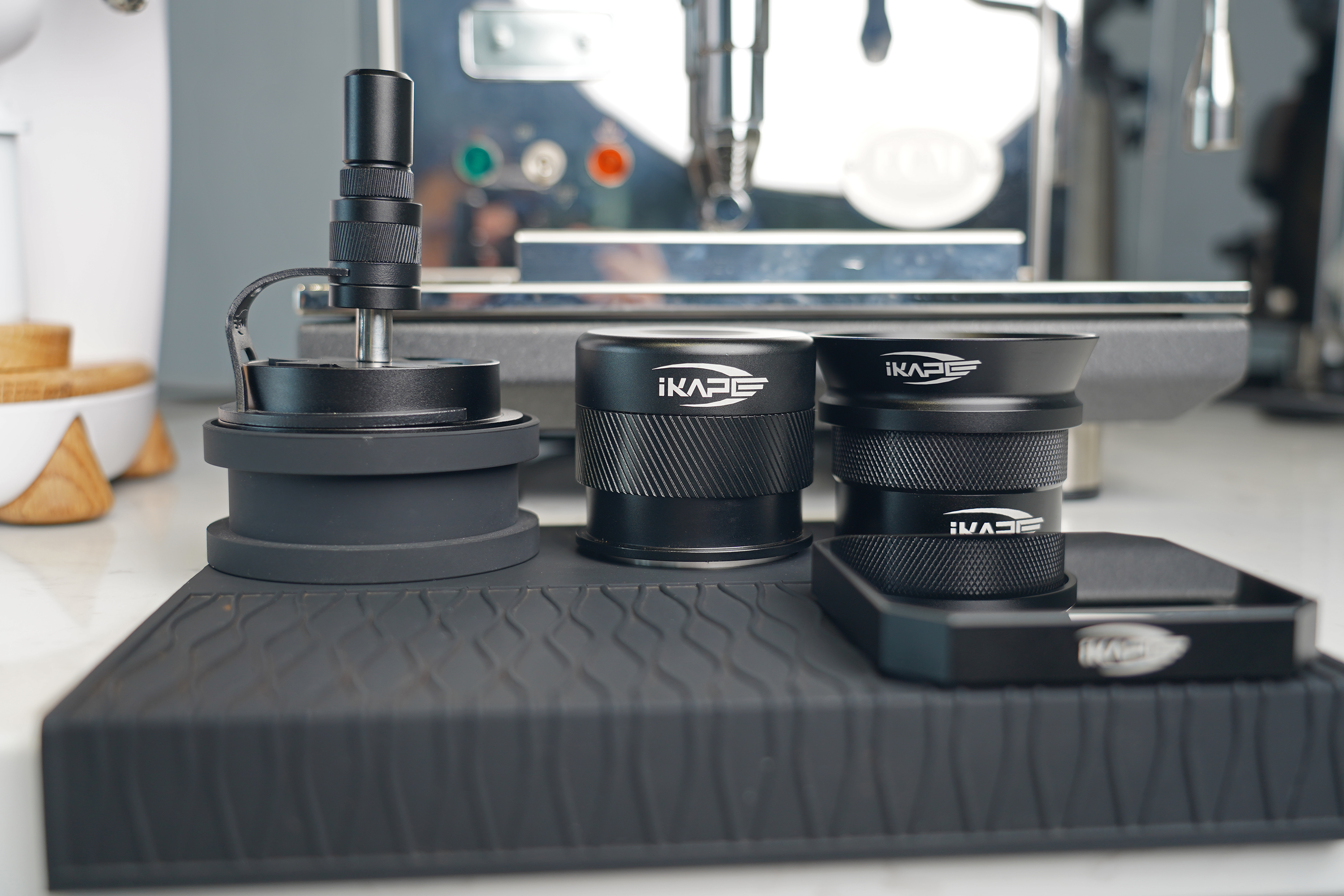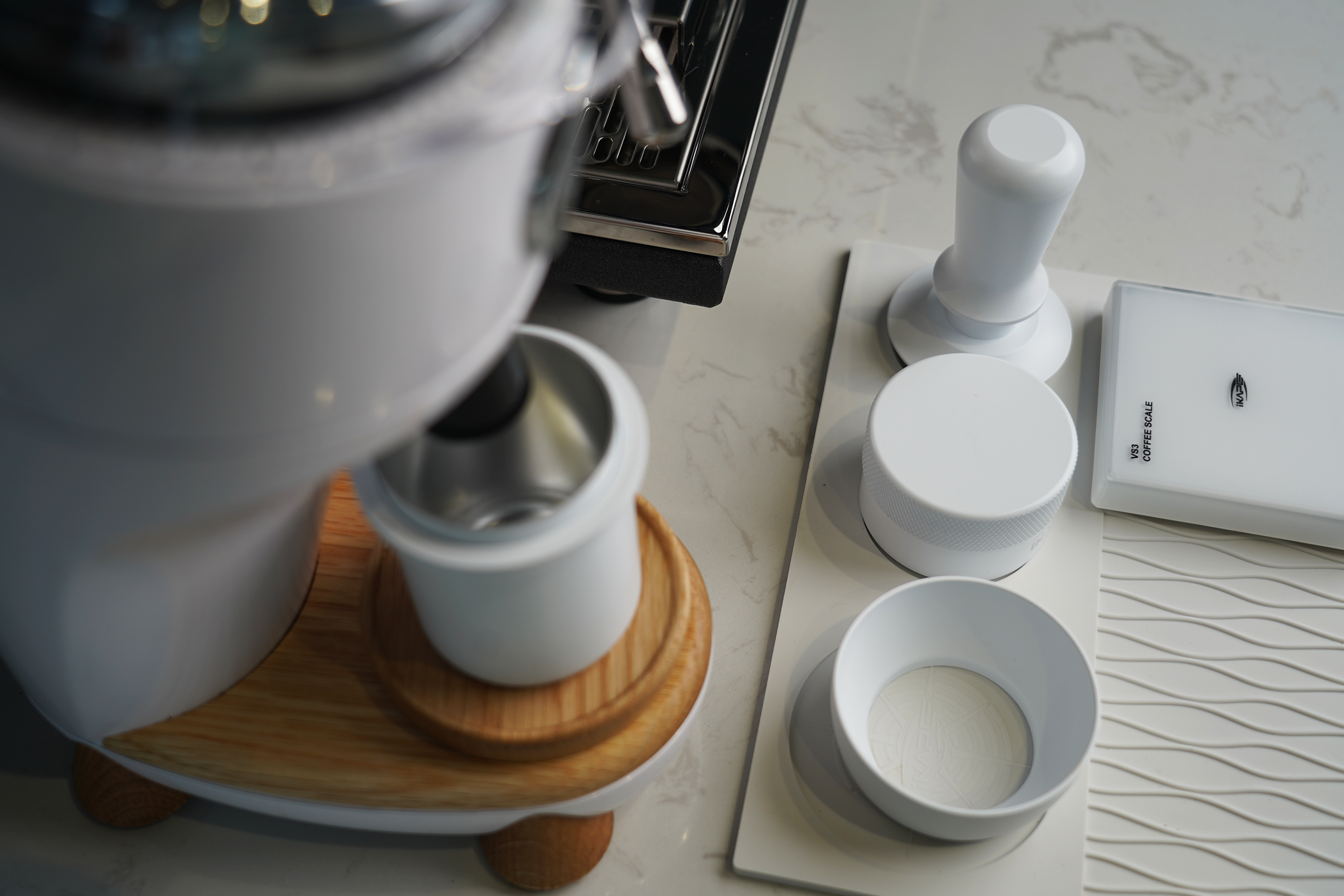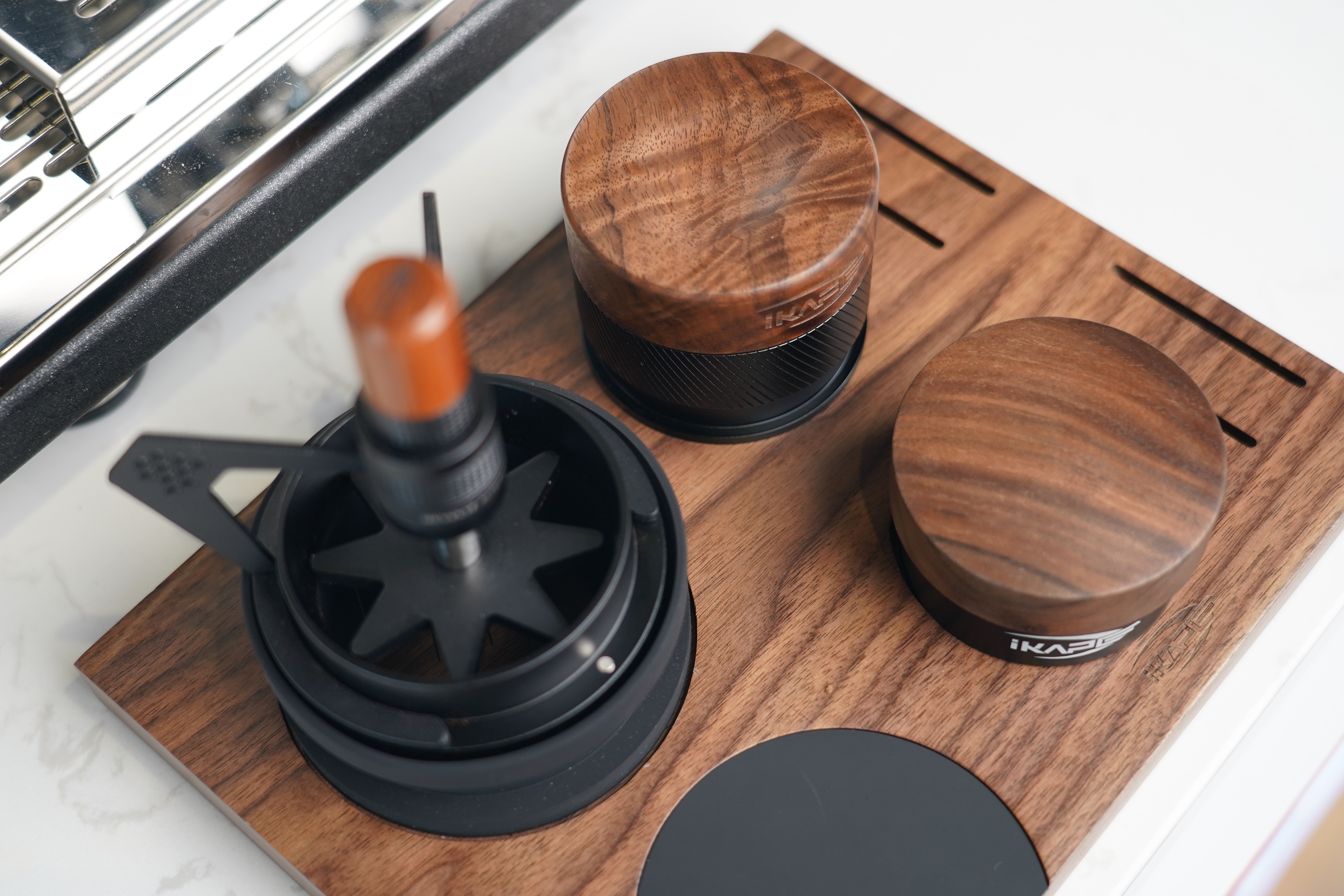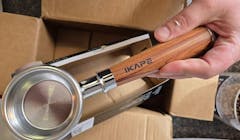Collection:
IKAPE Milk Pitcher
The Role of a Milk Frothing Pitcher and How to Choose One
The milk frothing pitcher (or latte art pitcher) is a deceptively simple tool that plays a critical role in crafting café-quality lattes and cappuccinos. Its design directly impacts milk texture, pour control, and the precision of latte art
Key Functions of a Milk Frothing Pitcher
Optimal Milk Steaming
Steam Wand Positioning: The pitcher’s spout width and depth determine the angle (45°–60°) for inserting the steam wand, affecting microfoam quality.
Temperature Control: Stainless steel’s conductivity helps gauge milk temperature (ideal: 60–65°C).
Latte Art Precision
Flow Control: The spout’s shape dictates milk flow speed and direction, crucial for patterns like hearts, rosettas, or swans.
Layered Structure: A good pitcher maintains the ideal foam hierarchy—liquid milk at the bottom, microfoam in the middle, and minimal surface bubbles.
How to Choose a Milk Frothing Pitcher
Material
Stainless Steel (Best Choice): Durable, easy to clean, and heat-responsive. Choose 304/316 food-grade steel with 0.8–1.2mm thickness.
Capacity
Home Use (1–2 Drinks): 400ml (single) or 500ml (double).
Commercial Use: 600ml+ for high-volume service.
Golden Rule: Fill the pitcher to 40%–50% capacity (e.g., 200ml milk in a 500ml pitcher).
Spout Design
Sharp Spout (5–8mm): For detailed patterns (e.g., swans). Best for advanced users.
Round Spout (8–12mm): For stable flow and basic art (e.g., hearts). Ideal for beginners.
Eagle Spout : Balances control and stability


